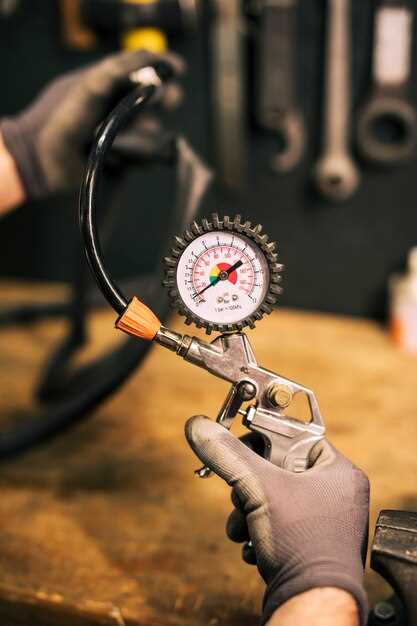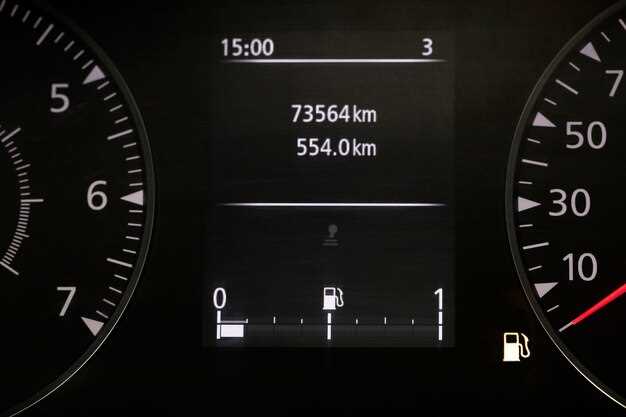
How to Use a Pyrometer for Tire Setup
- George Harris
- 0
- Posted on

In the fast-paced world of motorsports, achieving optimal tire performance is crucial for maximizing both speed and handling. One of the essential tools in a race engineer’s arsenal is the pyrometer, which measures the temperature of tire surfaces. Effective tire setup involves not only understanding the dynamics of vehicle performance but also the intricacies of tire behavior under various conditions.
Tires are complex components that play a vital role in vehicle dynamics, serving as the only contact point with the track. Their performance is influenced by multiple factors, including tire pressure, camber angle, and most importantly, temperature. Utilizing a pyrometer allows teams to analyze temperature distribution across the tire’s surface, providing invaluable insights into how the tire is working during laps. By evaluating these thermal readings, teams can make informed adjustments to ensure optimal grip and consistent performance.
In this article, we will explore effective tire setup techniques using a pyrometer, delving into the advantages of precise temperature measurements. Understanding how to interpret these readings can lead to better tire choices, improved setup configurations, and ultimately, enhanced race performance. Join us as we uncover the critical aspects of tire temperature management and its significant impact on racing outcomes.
Selecting the Right Pyrometer for Your Needs

Choosing the appropriate pyrometer is crucial for accurate tire temperature measurements, which play a significant role in optimizing performance. When selecting a pyrometer, consider several key factors to ensure it meets your specific requirements.
First, determine the temperature range that is relevant for your tire setup. Different racing conditions may require pyrometers with varied temperature ranges. Ensure the pyrometer can accurately measure the maximum temperatures commonly reached during your races, as using a device with insufficient range can result in inaccurate readings.
Next, evaluate the measurement type. There are infrared and contact pyrometers. Infrared pyrometers provide non-contact measurements, allowing for quick assessments without the need to touch the tire, which can be beneficial during dynamic racing environments. Contact pyrometers, on the other hand, can deliver more precise results when measuring tire surface temperature over time. Consider which method aligns best with your setup routine and preferences.
Additionally, look into the response time of the pyrometer. In racing, quick changes in tire temperature can occur, especially after tire changes or adjustments. A pyrometer with a rapid response time ensures that you capture these changes effectively, allowing you to make timely adjustments to your strategies.
The ease of use is another essential factor. The pyrometer should be user-friendly, with a straightforward interface and clear readings. Some models offer backlit screens or digital displays that enhance visibility in low-light conditions, which can be particularly useful during night events or overcast conditions.
Consider features such as data logging and connectivity options as well. Some modern pyrometers can store temperature readings and connect to software or apps for detailed analysis. This capability can provide insights into tire performance trends over time, aiding in refining your setup techniques.
Lastly, weigh the pricing options against the features offered. While it’s tempting to opt for the cheapest option, investing in a high-quality pyrometer can significantly impact your setup accuracy and overall race performance. Balance your budget with the required functionalities to find a reliable device that will serve your needs effectively.
Interpreting Temperature Data for Optimal Tire Performance
Understanding tire temperature data is critical for achieving optimal performance during a race. Here we break down how to interpret these temperatures effectively:
- Temperature Zones:
- Inner Edge: Typically runs cooler; indicates under-inflation or excess camber.
- Center: Should maintain moderate temperatures; excessive heat suggests over-inflation.
- Outer Edge: Warmer than the center; indicates proper inflation but could be too much camber or aggressive cornering.
- Heat Distribution:
- Check for even distribution across the tire. Uneven temperatures may indicate alignment or setup issues.
- A balanced temperature profile allows for better grip and handling.
- Target Temperature Range:
- For most racing tires, an optimal temperature range is between 180°F to 220°F (82°C to 104°C).
- Consult manufacturer specifications for specific tire types and their ideal operating temperatures.
- Tire Pressure Correlation:
- Higher temperatures can lead to increased tire pressure, affecting handling and longevity.
- Monitor pressure changes closely after heat cycles and adjust accordingly.
- Environmental Impact:
- Ambient temperature and track conditions can significantly influence tire performance and temperature.
- Adjust tire setups based on expected weather conditions during the race.
By regularly monitoring and interpreting tire temperature data, teams can make informed adjustments to tire setup, leading to improved performance and competitive advantage on the track.
Integrating Pyrometer Readings into Your Tire Setup Process

Incorporating pyrometer readings into your tire setup process can significantly enhance performance, providing detailed insights into tire temperatures across various conditions. To effectively utilize these readings, begin by measuring the tire temperature at multiple points–specifically, the inner, middle, and outer sections of the tire tread. This data helps identify any discrepancies in temperature distribution, which are crucial to understanding tire behavior under different load conditions.
Start by conducting a series of laps to bring the tires up to optimal operating conditions. After completing these laps, immediately use the pyrometer to take readings. This prompt measurement will yield the most accurate data, reflecting the tire’s performance when the rubber is at its peak temperature. It’s essential to record the readings systematically to track changes and trends over time.
Next, analyze the temperature differences across the tire tread. A uniform temperature indicates balanced contact with the road surface, while significant variances suggest alignment or pressure issues. For instance, if the inner section is considerably warmer, it may indicate that the tire is over-inflated or that camber settings need adjustment. Conversely, hotter outer temps might suggest under-inflation or excessive negative camber.
Additionally, calibrate tire pressures based on pyrometer outcomes. If tire temperatures are consistently high, consider reducing the pressure slightly to avoid overheating and potential tire failure. Conversely, a cold tire may require increasing pressure to achieve optimal performance. Always remember to make adjustments incrementally and re-measure, rather than making drastic changes at once.
Finally, integrate these readings into your overall data collection efforts along with other metrics such as tire wear and lap times. By combining pyrometer readings with other performance indicators, you can fine-tune your tire setup more effectively, ensuring consistent performance improvement and a competitive edge on the track.
